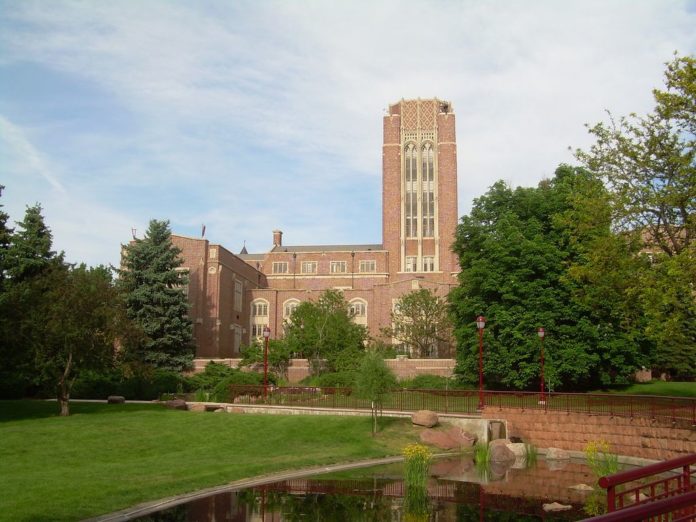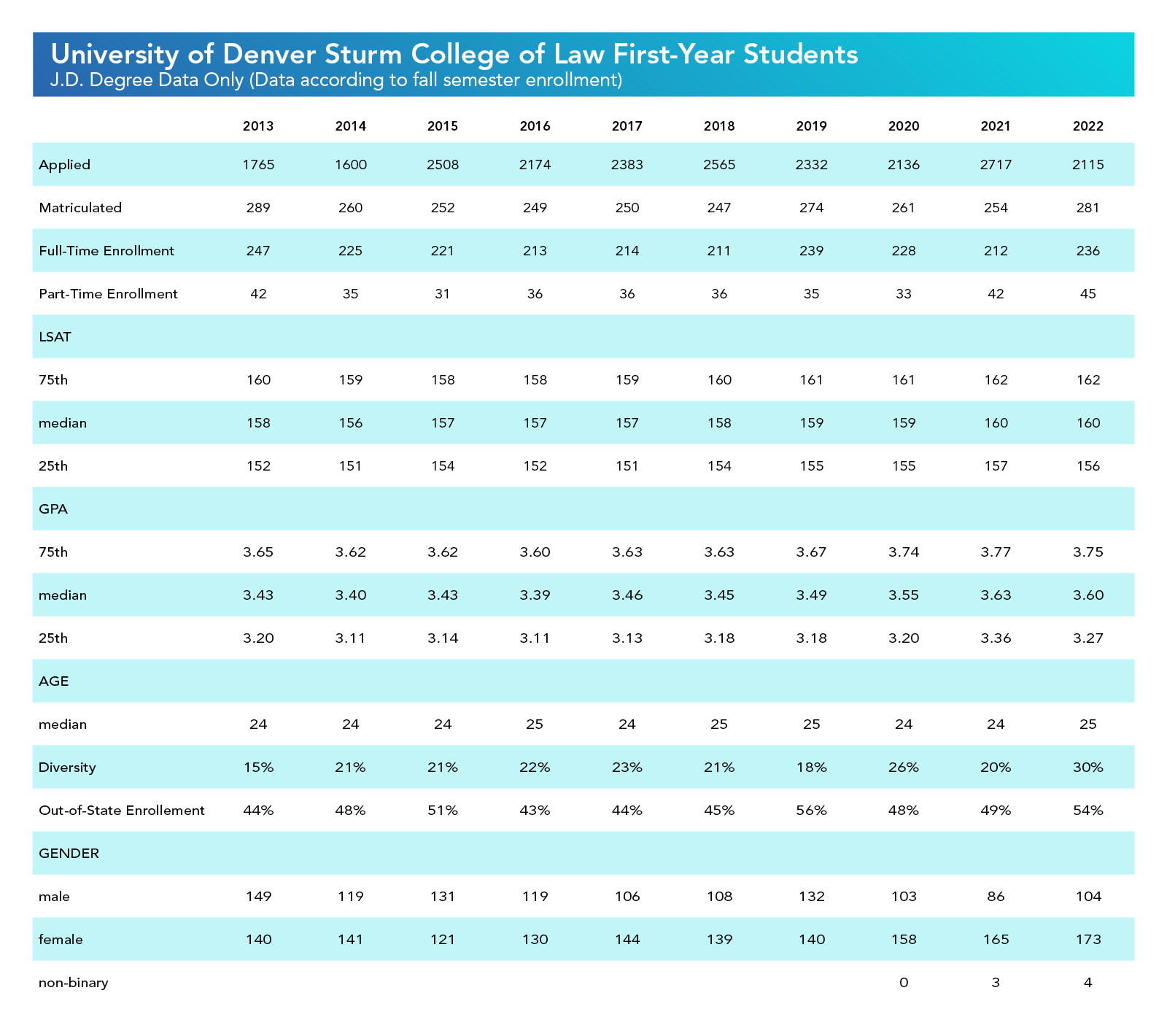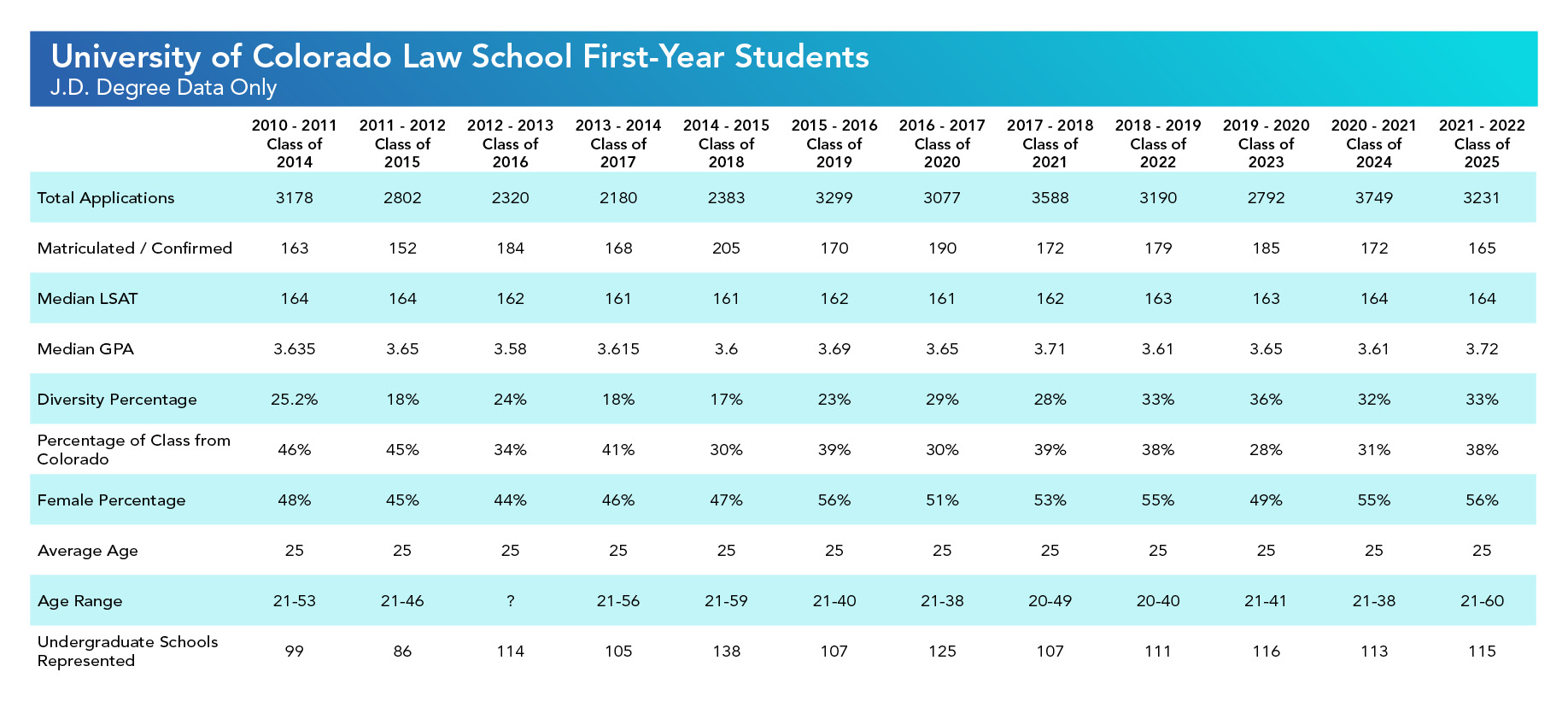
In recent years, there have been changes to how many people are enrolling in law school, who they are and the recruitment process.
In 2020, juris doctorate enrollment sat at 114,520 for the fall term in the U.S. for schools accredited by the American Bar Association and by 2022, it had trickled up to 116,723. There are about 1.3 million lawyers in the U.S., rising about 7% over the past decade.
Overall, enrollment at Colorado law schools has stayed strong. Recently, Law Week Colorado caught up with both law schools to find out how their data stacks up.
University of Denver Sturm College of Law
The University of Denver Sturm College of Law new enrollment sat at 281 for first-year students in the fall of 2022, which was up from 254 in 2021 and the second highest it’s been since 2013. The University of Denver Sturm College of Law expects a class of around 275 in 2023.
Iain Davis, the assistant dean of admissions and student financial management at the school, said a big reason for the increase in 2022 is COVID-19. He said the first year of COVID hit at the end of the school’s early admission cycle, so some people in that cycle who graduated from undergrad planned to go out in the workforce, but didn’t because of the pandemic.

“We’d already made all of our offers for the most part for that year,” Davis said. “So there were a lot of people in the applicant pool late that didn’t get to go to law school. So they put themselves into the next cycle early on, but then we got into the thick of COVID the second year, so we had people almost spill over into the next application cycle for two cycles.”
Diversity of students has also been growing at the school as 2022 was the most diverse first-year class in the last 10 years with 30% of students being racially/ethnically diverse. Davis noted this is a national phenomenon. Almost every year in the last 10, more women have also been first-year students at the school, which is also a national trend.
“Across the board, we’re trying to diversify the legal profession,” Davis said.
Over recent years, recruiting efforts have changed at the University of Denver Sturm College of Law. Traditionally, recruiters would go to recruitment fairs and smaller visits to individual universities. With COVID restrictions in place, they weren’t able to travel.
“As a function of necessity, we had to do things differently, and what I’m finding personally is I’m making more individual contact with applicants now then I ever had done before … mostly through Zoom,” Davis continued. “There are those who are applying to six or seven law schools across the country. For a lot of people, it’s just not reasonable to be able to get on a plane and pay for plane trips.”
Davis added after a Zoom call that goes well, the student is more likely to travel to Denver to check out the school.
University of Colorado Law School
The University of Colorado Law School had one of its smallest first-year enrollments in about a decade with 165 first-year students for 2021-22 (its 2022-23 numbers haven’t been published yet).
Alan Schieve, the director of admissions at the school, said it generally brings in between 160 to 180 students, and last year the school was very intentional about staying around 160 to keep within a range of total JD enrollment at the school.

The 2021-22 first-year class was also one of its most diverse in more than a decade, sitting at 33% diversity concerning race and ethnicity.
“We wanted to be as representative of the people of America as possible,” Schieve said. “We’re making efforts to attract [and] recruit … diverse students.”
The 2021-22 first-year students were 56% women, which is tied for the highest percentage at the school in more than a decade. Most of the first-year classes at the University of Colorado Law School recently are majority women, which Schieve said happened organically.
The pandemic also affected the University of Colorado Law School enrollment process which saw a dip in applications for the 2019-20 first-year class.
“It definitely impacted us not attending recruitment events,” Schieve said, noting the school did more virtual events during the pandemic, but are going to more in-person recruitment events now.
The University of Colorado Law School even created a virtual tour video after the school saw a huge increase in requests for that. The University of Denver Sturm College of Law did something similar. Schieve added there will still be virtual events going forward, but expects more to be in-person than virtual.
According to the Colorado Office of Attorney Regulation Counsel 2022 report, there are 28,292 attorneys with active licenses in the state which is an increase from the 28,060 attorneys recorded in the OARC.

